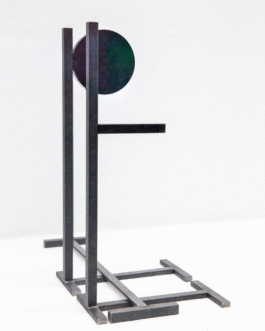
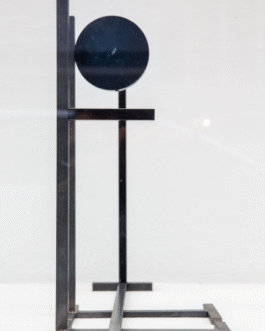
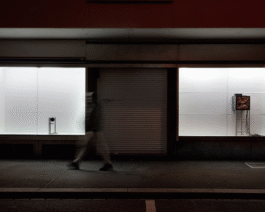
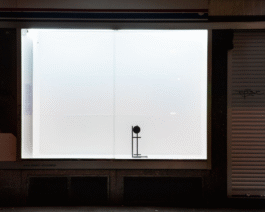
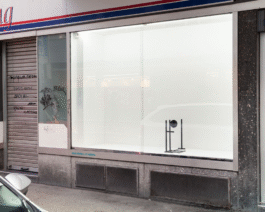
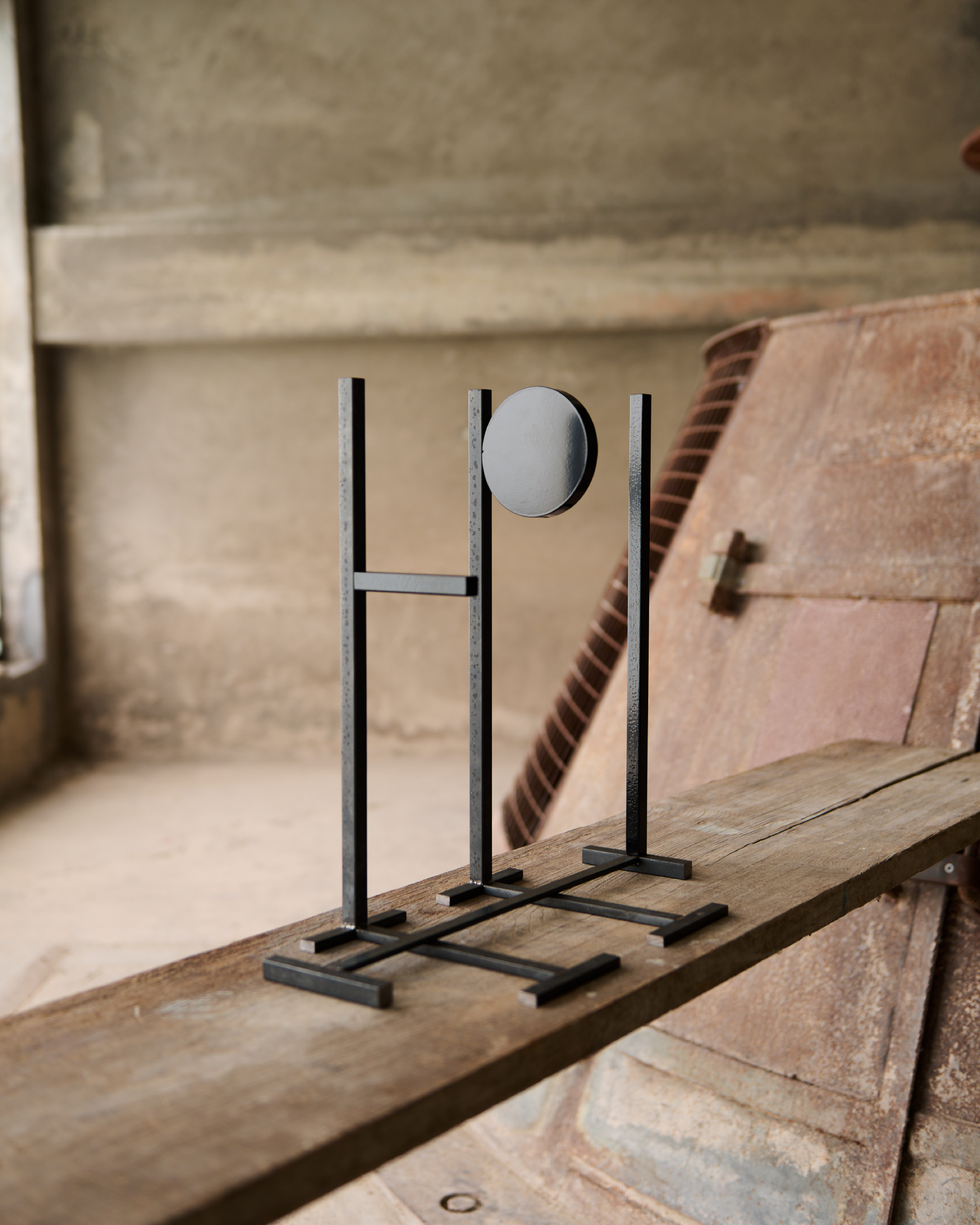
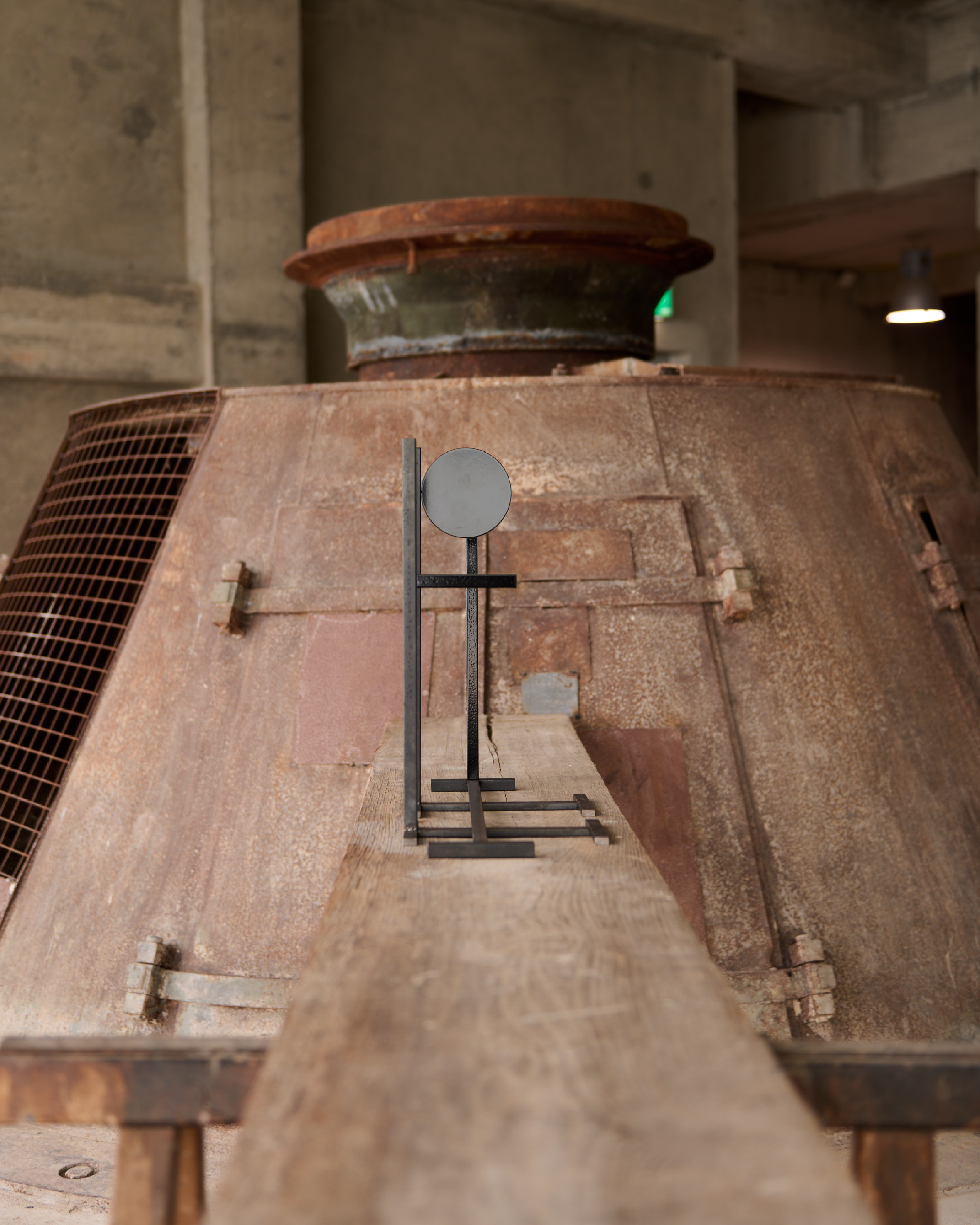
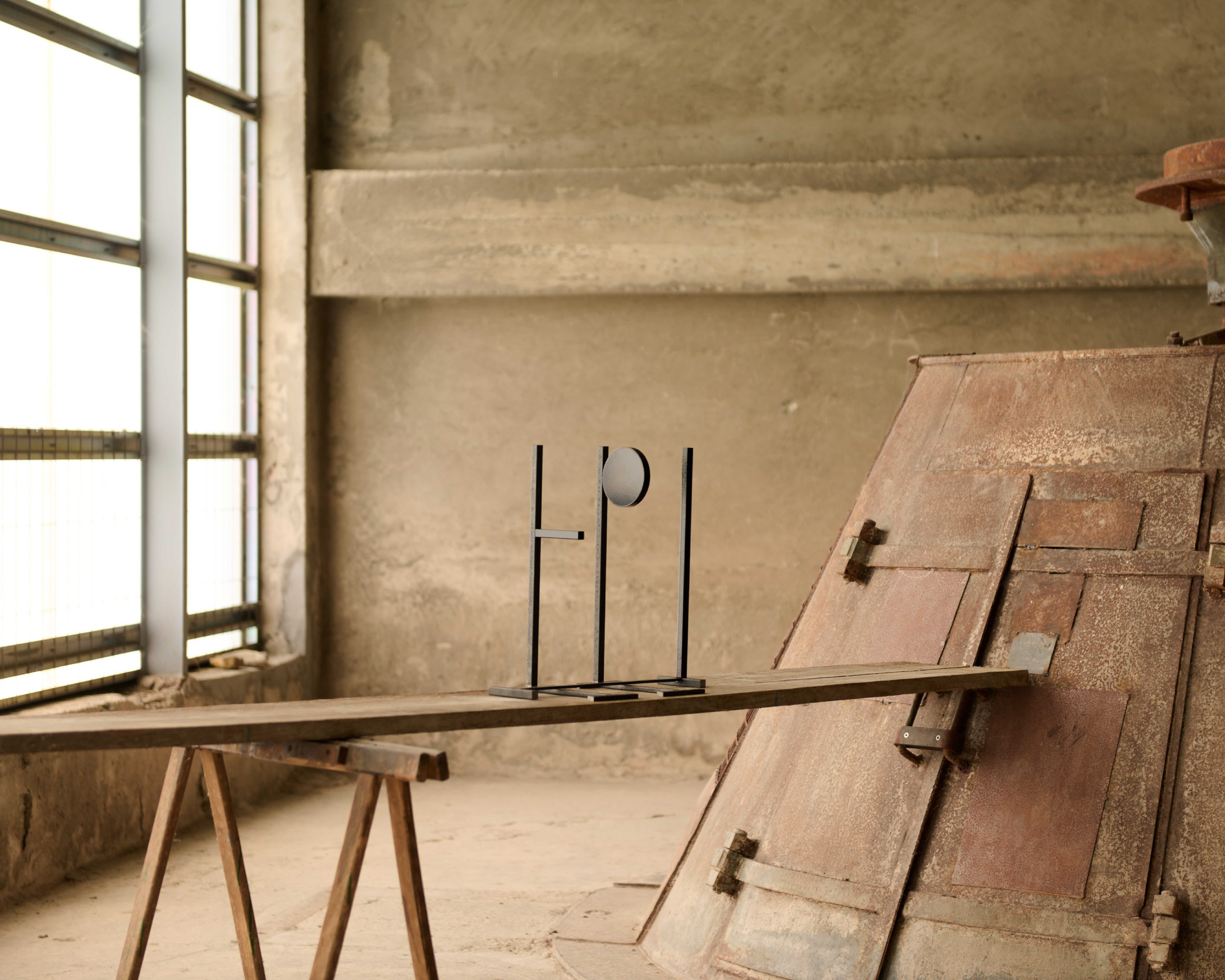
Venus
Choreographic Object | 2021
Venus transforms fragmented pieces of iron into a powerful symbol of female identity and feminist protest. The work invites viewers to assemble the image through their gaze, becoming part of a dynamic process between objectification and self-determination. It reveals how female bodies are shaped, fragmented, and simultaneously anonymized through perception.
The Venus piece recalls precise measuring instruments—partly due to its relatively small size of 44 cm height, 22 cm depth, and 5.5 cm width. The individual parts, made of black and dark gray iron, are movable but fixed in a pre-calculated formation.
By asking viewers to position themselves at a specific distance and close one eye, the fragments merge from a very particular perspective into the Venus symbol—a sign long read as feminine, representing femininity, beauty, and fertility, and simultaneously a powerful emblem of feminist protest and female self-determination.
With this choreographic object, the artist reflects on the tension between observation and objectification of female bodies in public space. The experience of being “fragmented” by others’ gaze becomes tangible: the audience is invited to become part of this process by using their gaze to assemble the pieces into a new whole. Yet, this apparent reunification is also an anonymization—transforming an individual body into an abstract, symbolic image.
Thus, Venus draws attention to the power structures inherent in how female bodies are seen, fragmented, and normalized—and calls for a conscious reflection on one’s own gaze and the position from which we look.
Supported by:
City of Zurich Culture
Canton of Zurich Culture
Migros Culture Percentage
Maison du futur
Various Foundations
Production:
STUDIO RR








Venus
Choreographic Object | 2021
Venus transforms fragmented pieces of iron into a powerful symbol of female identity and feminist protest. The work invites viewers to assemble the image through their gaze, becoming part of a dynamic process between objectification and self-determination. It reveals how female bodies are shaped, fragmented, and simultaneously anonymized through perception.
The Venus piece recalls precise measuring instruments—partly due to its relatively small size of 44 cm height, 22 cm depth, and 5.5 cm width. The individual parts, made of black and dark gray iron, are movable but fixed in a pre-calculated formation.
By asking viewers to position themselves at a specific distance and close one eye, the fragments merge from a very particular perspective into the Venus symbol—a sign long read as feminine, representing femininity, beauty, and fertility, and simultaneously a powerful emblem of feminist protest and female self-determination.
With this choreographic object, the artist reflects on the tension between observation and objectification of female bodies in public space. The experience of being “fragmented” by others’ gaze becomes tangible: the audience is invited to become part of this process by using their gaze to assemble the pieces into a new whole. Yet, this apparent reunification is also an anonymization—transforming an individual body into an abstract, symbolic image.
Thus, Venus draws attention to the power structures inherent in how female bodies are seen, fragmented, and normalized—and calls for a conscious reflection on one’s own gaze and the position from which we look.
Supported by:
City of Zurich Culture
Canton of Zurich Culture
Migros Culture Percentage
Maison du futur
Various Foundations
Production:
STUDIO RR